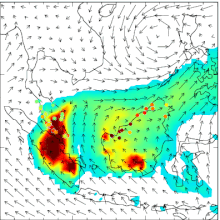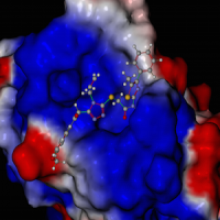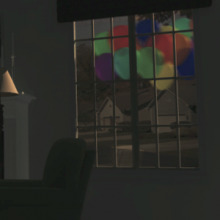
Climate Modeling Workflow
HCC staff members Jingchao Zhang, Tom Harvill and Adam Caprez are using high performance computing to create a real-time weather forecasting system for Nebraska and Iowa.
Working as a pipeline, the computers at HCC retrieve and process climate information at an incredible rate. The results are displayed on a single website (http://esmc.unl.edu/) and citizens of Nebraska have access to detailed local weather information.

High Throughput Virtual Screening
Bio-computing programs that take advantage of the latest developments in high-performance, GPU-accelerated computing have recently become available, and are powerful tools for analyzing molecular targets at atomic detail and virtually screening millions of compounds at a fraction of the cost of bench methods. The goals of this project are to: 1) develop highthroughput virtual screening, homology modeling and molecular dynamics at the Holland Computing Center into a powerful, user-friendly tool for drug discovery, and 2) use the resource to identify small molecules that can specifically inhibit new targets for cancer therapy.
Image Harvest
Avi Knecht, Harkamal Walia, and Malachy Campbell are working to identify the genes of rice that are most resistant to salt stress. The data for the plants on this project is incredibly large; there’s so much that it can’t be processed on a regular computer. One full unprocessed experiment takes up about 300GB, roughly 300,000 images. Using high performance computing at HCC, the team can process an entire experiment in 24 hours.
The effects of salt stress are comparable to drought conditions. Avi, Markamal and Malachi hope that their research will lead to salt resistant rice plants that are more likely to survive harsh droughts.

Render Farm Development
HCC staff are working in collaboration with the Hixon-Lied College of Fine and Performing Arts to develop a visual effects rendering pipeline on HCC machines.
In visual effects, rendering is the process of taking a set of data and creating a digital image from it. With computer-generated imagery, the computer must calculate every visible aspect of the image. This is an incredibly time intensive process and presents a major bottleneck in the creative process. HCC is working with the CFPA to develop a way to integrate access to HCC resources with existing desktop visual effects applications. This will allow CFPA students to leverage HCC resources for both classroom and project work, greatly improving turn-around time and quality of work.